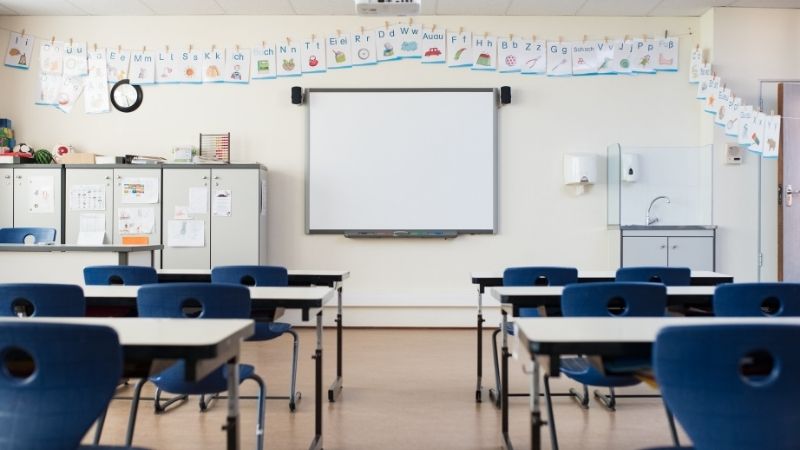
Hey there fellow learners! Are you ready to dive into the ever-evolving world of educational technology?
Well, buckle up because we're about to embark on a journey through the latest teaching tools, the incredible role of AI and AR in education, the game-changing adaptive learning technologies, and the thrilling gamification of learning.
Together, we'll navigate this dynamic landscape of edtech trends and discover how they are shaping the future of learning.
So, let's get started and explore this exciting frontier together!
Key Takeaways
- The latest teaching tools in education include interactive whiteboards, virtual reality headsets, educational apps on smartphones and tablets, video conferencing software, and tools for fostering collaboration and critical thinking skills.
- AI and AR have a significant impact on education by enabling personalized learning, enhanced visualization, increased engagement through interactive simulations and virtual reality experiences, real-time feedback with AI-powered assessments, and accessibility through AR-enabled devices.
- Adaptive learning technologies personalize the learning process by using advanced algorithms and data analytics to deliver targeted content based on individual needs. They also incorporate interactive features such as quizzes, simulations, and virtual reality experiences, and adapt to individual preferences and pace of learning.
- Gamification in education promotes increased engagement through gamified elements like badges and rewards, personalized learning experiences tailored to individual needs, active participation and hands-on learning, immediate feedback on progress, and the promotion of collaboration and teamwork skills.
You'll be amazed by the range of emerging teaching tools available in education today. From interactive whiteboards to virtual reality headsets, these tools are revolutionizing the way we teach and learn.
One such tool that has gained popularity is the use of educational apps on smartphones and tablets. These apps provide students with engaging content and allow them to learn at their own pace.
Another emerging teaching tool is video conferencing software, which enables students to connect with experts from around the world without leaving the classroom. These tools not only enhance learning experiences but also foster collaboration and critical thinking skills.

Transitioning into exploring the impact of AI and AR in education, it's important to note how these emerging teaching tools have laid the foundation for more advanced technologies like artificial intelligence (AI) and augmented reality (AR).
Exploring the Impact of AI and AR in Education
Exploring the impact of AI and AR in education can revolutionize the way students learn and engage with course material. These technologies have the potential to transform traditional classrooms into immersive learning environments, making education more interactive and dynamic.
Here are five reasons why AI and AR are crucial for shaping the future of learning:
Personalized Learning: AI algorithms can analyze individual student data, providing personalized recommendations and targeted interventions.
Enhanced Visualization: AR technology allows students to visualize complex concepts, making abstract topics easier to understand.
Increased Engagement: Interactive simulations and virtual reality experiences create a more engaging learning environment, capturing students' attention.
Real-time Feedback: AI-powered assessments provide immediate feedback, allowing students to track their progress and make improvements.

Accessibility: AR-enabled devices can help bridge the gap between physical barriers and education, bringing learning opportunities to all.
By harnessing the power of these technologies, we can enhance learning experiences and empower students to reach their full potential.
Now let's delve deeper into how adaptive learning technologies further contribute to this transformation.
Enhancing Learning With Adaptive Learning Technologies
Immersing myself in adaptive learning technologies can greatly enhance my learning experience and help me achieve my educational goals. These technologies are designed to personalize the learning process by adapting to my individual needs, preferences, and pace of learning.
They use advanced algorithms and data analytics to assess my knowledge gaps and provide targeted content, ensuring that I receive the right information at the right time. Adaptive learning platforms also offer interactive features such as quizzes, simulations, and virtual reality experiences, which make the learning process engaging and immersive.
Gamification: Revolutionizing the Learning Experience
By incorporating gamification into your learning experience, you can revolutionize the way you engage with educational content. Gamification brings a sense of excitement and motivation to the learning process, making it more enjoyable and immersive. Here are five reasons why gamification is transforming education:
Increased engagement: Gamified elements like badges, leaderboards, and rewards keep learners motivated and engaged.

Personalized learning: Gamification allows for personalized learning experiences tailored to individual needs and preferences.
Active participation: Games encourage active participation and hands-on learning, fostering a deeper understanding of concepts.
Immediate feedback: Through gamification, learners receive instant feedback on their progress, enabling them to track their growth in real-time.
Collaboration opportunities: Gamified activities promote collaboration among learners, enhancing communication and teamwork skills.
With these benefits in mind, it's clear that gamification has the potential to shape the future of education by creating an engaging and interactive learning environment.
Shaping the Future of Learning With Edtech Trends
With the rapid advancement of technology, I find myself constantly amazed at how educators and students are embracing new ways to enhance the learning experience. Edtech trends have been instrumental in shaping the future of education, providing innovative tools that make learning more interactive and engaging.
One such trend is the integration of Artificial Intelligence (AI) and Augmented Reality (AR) into classrooms. AI provides personalized learning experiences by analyzing data and adapting content to individual needs, while AR brings textbooks to life with interactive visuals and simulations.

Additionally, adaptive learning technologies are revolutionizing education by tailoring lessons based on each student's progress and abilities. These technologies allow students to learn at their own pace and focus on areas where they need improvement, ultimately leading to better learning outcomes.
Lastly, gamification has gained popularity as a way to motivate learners through game-like elements such as badges, levels, and rewards. By incorporating gamification into the learning process, educators can create a more engaging and enjoyable experience for students, encouraging them to actively participate and take ownership of their learning.
These edtech trends empower both educators and students to explore new horizons in education while fostering a sense of freedom in their learning journey. By embracing these technologies, we can create a more dynamic and effective learning environment that prepares students for the challenges of the future.
Frequently Asked Questions
Emerging teaching tools in education help address diverse learning needs by providing personalized and adaptive learning experiences. AI and AR enhance engagement, while gamification promotes motivation. These technologies shape the future of learning, making it more inclusive and effective.
What ARe Some Challenges That Educators Face When Implementing AI and AR in the Classroom?
Implementing AI and AR in the classroom can be challenging for educators. The initial learning curve, technical issues, and maintaining student engagement are some of the obstacles I've encountered.
Can Adaptive Learning Technologies Be Personalized for Each Student's Unique Learning Style?
Yes, adaptive learning technologies can be personalized for each student's unique learning style. By utilizing data and algorithms, these tools can tailor content and activities to meet individual needs, enhancing the learning experience.
How Does Gamification in Learning Improve Student Engagement and Motivation?
Gamification in learning transforms classrooms into vibrant, immersive worlds where students are motivated to learn. It ignites their engagement by turning lessons into games, fostering collaboration, and rewarding progress.

What Are Some Potential Concerns or Limitations of Relying Heavily on Edtech Trends for Shaping the Future of Learning?
Relying heavily on edtech trends for shaping the future of learning may present concerns and limitations. These include potential issues with accessibility, equity, data privacy, and the need for effective teacher training and support in implementing these technologies.
 Careers in EducationElementary EducationHigh School EducationEducational TechnologyTeaching StrategiesSpecial EducationPrivacy PolicyTerms And Conditions
Careers in EducationElementary EducationHigh School EducationEducational TechnologyTeaching StrategiesSpecial EducationPrivacy PolicyTerms And Conditions
